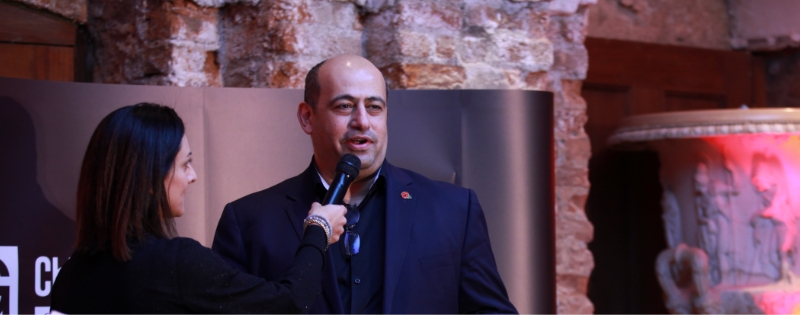We’ve all heard the philosophical question: “If a tree falls in a forest, and no one is around to hear it, does it make a sound?”
I’d like to offer an updated version, specifically within the context of HR trends: “If an organization installs a slide and ball-pool in the office, but the poor mental wellbeing of its workforce sees no improvement, do these efforts still count as wellbeing initiatives?”
It is, admittedly, far less catchy. But as talent attrition, engagement and retention remains top of mind for executives across all industries – not just HR – it is arguably in more urgent need of consideration.
On a recent roundtable exploring HR trends and the future of work, an industry expert used a term that struck me as interesting.
In response to my asking “what are the biggest challenges your organization faces in keeping employees engaged?”, the head of culture innovation at a leading global manufacturer replied: “The thing I’m finding hard, personally and professionally, is making sure we’re not wellbeing-washing.”
While the all-too-familiar sin of “greenwashing” holds those in the sustainability and ESG spaces accountable, the newer – but comparably cynical – “wellbeing-washing” is an offence HR execs are increasingly keen to avoid committing.
So, what is wellbeing-washing?
In 1986, environmentalist Jay Westerveld coined the term ‘greenwashing’ when he identified a huge disparity between the narrative his Fiji hotel resort was projecting around their environmental concerns, and their actions towards the local environment. He saw a sign in his hotel room encouraging guests to reuse their towels “to help us help our environment”, but noticed the rapid construction of more on-site accommodation, which was encroaching on the surrounding flora and fauna.
Naturally, “wellbeing-washing” highlights a disconnect between a company’s self-professed interest in its employee’s welfare, and the results of its real-life actions.
So in a climate where searches for roles offering mental wellbeing benefits have increased by 600%, according to Indeed, and where Gallup reports 15% of Americans are reporting miserable work experiences, organizations must look to combat signs of vague, misleading, exaggerated or downright untrue wellbeing claims.
Employee listening as the antidote to wellbeing-washing
At the GDS HR North America Summit, Emily Killham, Director of Research and Insights at Perceptyx, spoke on the indispensable role of employee listening. The objective, she emphasized, was to be able to say: “We asked, we acted, we asked again, we acted again.”
She acknowledged the dangers of “survey fatigue” amongst the workforce, but also highlighted the dangers of “inaction fatigue” being far graver – especially if an organization has asked its employees to repeatedly share their priorities and taken little to no action with the information.
Alongside this, HR executives and managers must increasingly execute caution in ensuring their wellbeing initiatives are not ignorant or irrelevant to the needs of their staff. It is undeniably painful to see budgets spent on wellbeing pilots that match successful HR trends at other organizations, but that do not align to the unique requirements of the workforce in question.
To make matters worse, a negative sentiment amongst disengaged employees – catalyzed by inaction or ignorance towards the data they have submitted in multiple surveys – is intensified if their employer publicly declares the success of their wellbeing initiatives on the platforms such as LinkedIn.
Making listening business critical
To combat this, Killham recommends having a “strong feedback loop” that is authentically felt by employees. And to illustrate her point, she cited the results of a poll conducted at the HR Summit around the topic of employee listening. “The poll asked how much employee listening firms are doing compared with this time last year,” she said. “And while 39% of respondents said they were doing much more, and 34% said they were doing somewhat more, a significant 27% said they had seen either no improvement or that they were doing less.”
And while the results tallied with similar studies the team at Perceptyx had conducted themselves, and with wider industry research – Gallup’s report on employee engagement found that businesses with a highly engaged workforce see 21% higher profitability – she acknowledged there is room for vast improvement.
“In the face of the undeniable connection between engagement and productivity, there is a real urgency when it comes to making these improvements a business priority,” she said. “We need to make employee listening not an HR task, but a business task.”
GDS Summits are tailored 3-day virtual event conferences that bring together business leaders and solution providers to accelerate sales cycles, industry conversations and outcomes. Regarding the HR Digital Summit 88% of Delegates said the overall experience of the Digital Summit they attended was either Above Average or Excellent and 100% of Delegates said the Digital Summit provided them with actionable outcomes to support their current initiatives.
For more, click here to hear from attendees on how GDS has helped them to achieve their business outcomes.
Continue the debate at GDS’ HR Summits where we bring together senior human resources executives who are actively seeking to share, learn, engage, and find the best solutions.












